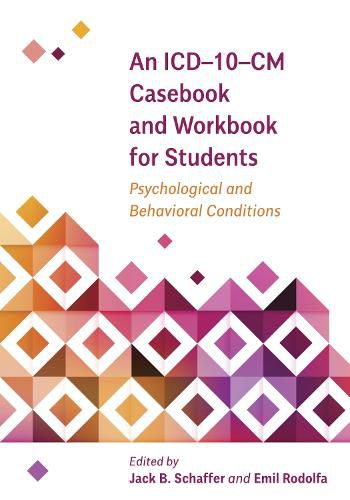Readings Newsletter
Become a Readings Member to make your shopping experience even easier.
Sign in or sign up for free!
You’re not far away from qualifying for FREE standard shipping within Australia
You’ve qualified for FREE standard shipping within Australia
The cart is loading…






Competent diagnosis is critical to any therapeutic encounter. It informs the psychologist’s approach to his or her client, and helps to ensure competent practice. This book introduces students to the complex process of differential diagnosis using the International Classification of Diseases, Tenth Revision, Clinical Modification (ICD-10-CM) - that is, selecting the most appropriate diagnosis after ruling out all other possibilities, based on the client’s overall presentation.
Each chapter in this book presents a detailed case illustration and challenges readers to reach an ICD-10-CM diagnosis by evaluating the client’s unique symptoms. These cases also demonstrate how to rule out options using careful, contextually appropriate assessments to arrive at the primary diagnosis. Importantly, chapters review ethical and risk management issues, as well as key considerations for disposition and treatment planning. Hands-on activities provide readers with case-specific questions that experienced clinicians must ask themselves in these situations.
$9.00 standard shipping within Australia
FREE standard shipping within Australia for orders over $100.00
Express & International shipping calculated at checkout
Competent diagnosis is critical to any therapeutic encounter. It informs the psychologist’s approach to his or her client, and helps to ensure competent practice. This book introduces students to the complex process of differential diagnosis using the International Classification of Diseases, Tenth Revision, Clinical Modification (ICD-10-CM) - that is, selecting the most appropriate diagnosis after ruling out all other possibilities, based on the client’s overall presentation.
Each chapter in this book presents a detailed case illustration and challenges readers to reach an ICD-10-CM diagnosis by evaluating the client’s unique symptoms. These cases also demonstrate how to rule out options using careful, contextually appropriate assessments to arrive at the primary diagnosis. Importantly, chapters review ethical and risk management issues, as well as key considerations for disposition and treatment planning. Hands-on activities provide readers with case-specific questions that experienced clinicians must ask themselves in these situations.